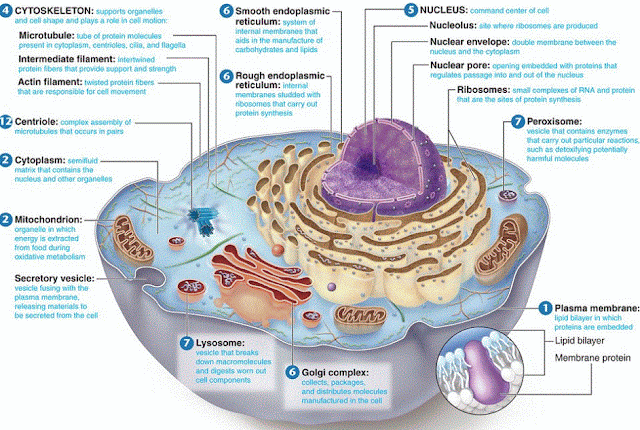 |
| The structure of a human cell |
Although there are different types of cells, most cells have the same components. A cell consists of a nucleus and cytoplasm and is contained within the cell membrane, which regulates what passes in and out. The nucleus contains chromosomes,which are the cell's genetic material, and a nucleolus, which produces ribosomes. Ribosomes produces proteins, which are packaged by the golgi apparatus so that they can leave the cell. The cytoplasm consists of a fluid material and organelles, which could be considered the cell's organs. The endoplasmic reticulum transports materials within the cell. Mitochondria generates energy for the cell's activities. Lysosomes contains enzymes that can break down particles entering the cell. Centrioles participates in cell division. Perioxisomes neutralize toxic substances. Microfilaments and microtubules are proteins that form the cytoskeleton which is the cell skeleton.


0 Comments